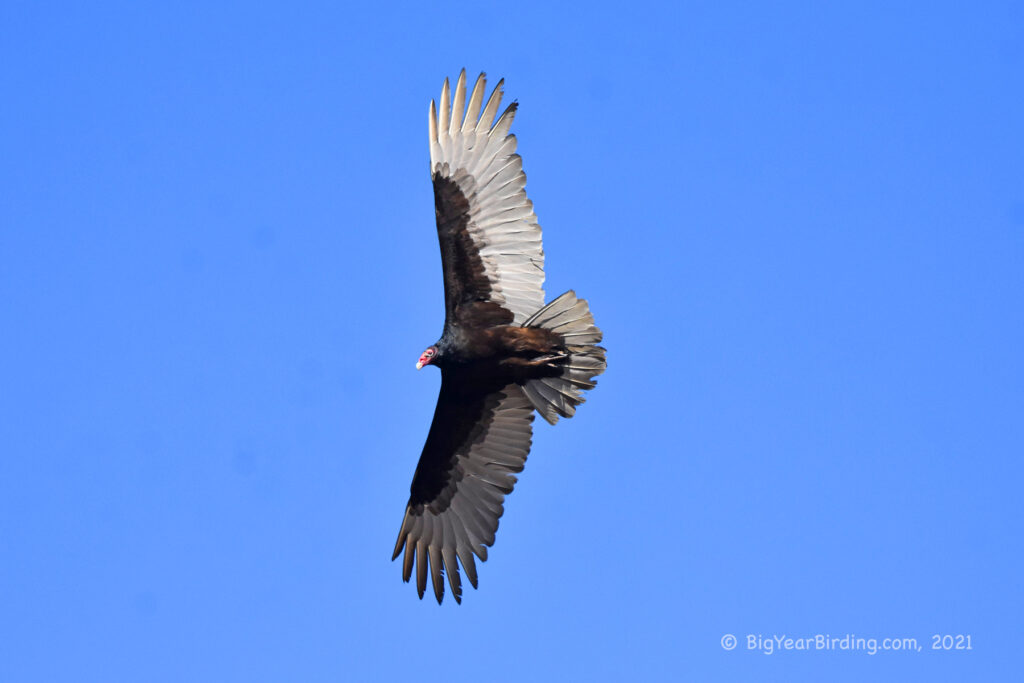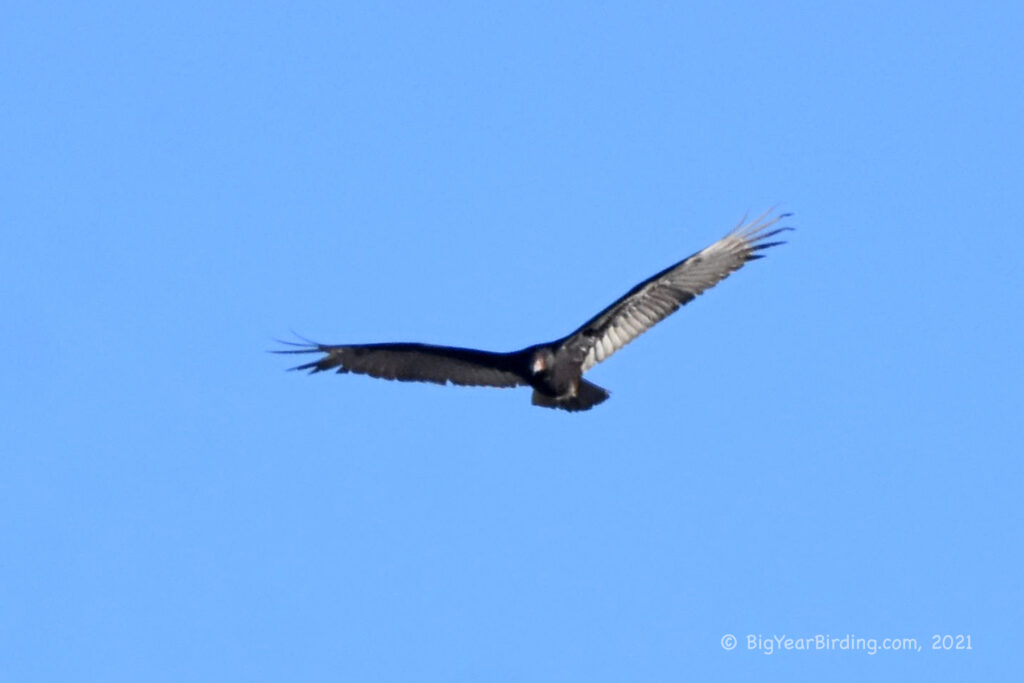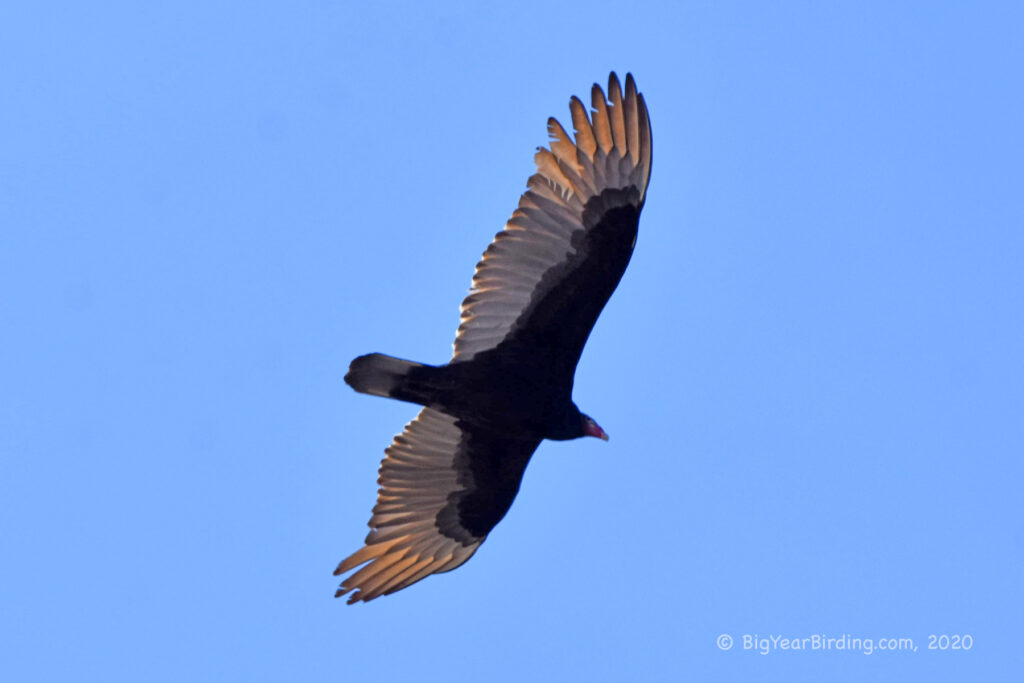
The Turkey Vulture (Cathartes aura) is a large, broad-winged bird of prey found in the Americas. Adults typically measure between 25 to 32 inches in length and have a wingspan of 5 to 6 feet. They can weigh between 2 to 4 pounds. The turkey vulture has a dark brown to black plumage with a featherless, red head and a hooked beak. Their distinctive featherless heads are an adaptation for scavenging, as it helps to keep the bird clean while feeding on carrion.

Turkey vultures are known for their soaring abilities and can fly for long periods of time without flapping their wings. They are often seen circling in the sky, using their keen sense of smell to locate carrion from high above. They can also be identified by their dihedral wings, which are angled upwards at the wrist, and by their wobbly, unsteady flight pattern. These features help distinguish the turkey vulture from other similar-looking birds.
Turkey vultures are found throughout the Americas, from southern Canada to the southern tip of South America. While some populations are year-round residents, others migrate to warmer climates during the winter months. In North America, most populations migrate to Central and South America during the fall and winter. During migration, large flocks of turkey vultures can often be seen flying in a distinctive “kettle” formation, spiraling upwards on thermal currents to gain altitude before continuing their journey.
In addition to their scavenging behavior, turkey vultures also play an important ecological role by helping to control the spread of disease. Their digestive system is highly acidic, allowing them to consume carrion that would be toxic to other animals. This helps to prevent the spread of diseases like anthrax and botulism, which can be carried by dead animals.

Despite their unsavory diet, the turkey vulture is an important and fascinating bird of prey. Its unique adaptations and behavior make it an interesting subject for birdwatchers and nature enthusiasts alike.

